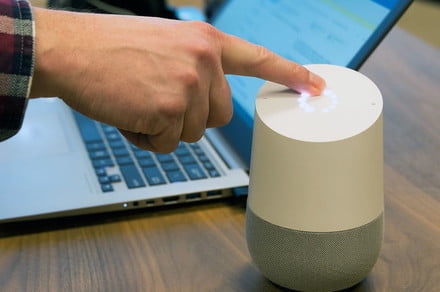Google has been actively exploring ways to expand virtual interactions beyond touchscreens and voice assistants. After pioneering touch-sensitive denim jackets and hands-free radar phone controls, Google’s research division is now experimenting with weaving technology into fabrics.
Called “E-Textiles,” the concept takes advantage of textile braiding techniques to enable cords to sense gestures. This could potentially allow people to, for instance, control their music by pinching the wire of their headphones or skipping the track by twisting their hoodie’s strings. Google says the research, for now, exclusively focuses on “drawstrings in garments and as wired connections for data and power across consumer devices,” since they’re commonly used.
[youtube https://www.youtube.com/watch?v=pbAvY6bwZD8?feature=oembed&w=100&h=100]
Instead of using three or more material strands to form a braid, Google’s project involves interweaving a series of electrically conductive textile yarns. When the user performs an action like pinching a wire, these yarns transmit signals that tell the connected device to perform the assigned task. In addition, this design is interlaced with fiber optic strands that can display color and offer visual feedback whenever someone interacts with the cord.
“Textiles have the potential to help technology blend into our everyday environments and objects by improving aesthetics, comfort, and ergonomics. Consumer devices have started to leverage these opportunities through fabric-covered smart speakers and braided headphone cords, while advances in materials and flexible electronics have enabled the incorporation of sensing and display into soft form factors, such as jackets, dresses, and blankets,” wrote Alex Olwal, Research Scientist, Google Research, in a blog post.
Since the smart cord houses eight sensory threads, they’re able to detect a wide number of gesture combinations with 94% accuracy. However, it’s worth noting the experiment’s results, at the moment, are based on data collected from 12 new participants and it’s not yet a user-independent system. Through these datasets, Google is also training a predictive machine learning algorithm, which is what lets the braid distinguish between the several gestures.
Fundamentally, the cord supports a total of six gestures: twisting, flicking, sliding, pinching, grabbing, and patting. On top of that, the threads are programmed to recognize finger direction and speed. Therefore, theoretically, the set of gestures that is possible is much higher and lets the user precisely input their command, Google adds.
So far, Google has built a number of prototypes with its E-Textiles module. In a preview clip, the company demos how pinching a speaker’s cord can pause or play the playback, and swiping it can switch to the next track. It also showcased how the “Scroll” gesture can enable a braided wire to double as a multi-touch trackpad.
You won’t find these smart cords in consumer gadgets anytime soon, nor has Google commented on whether there’s a timeline for their release. As the world transitions away from wires, it’s also unclear whether this technology can make any noticeable difference in our virtual interactions.

